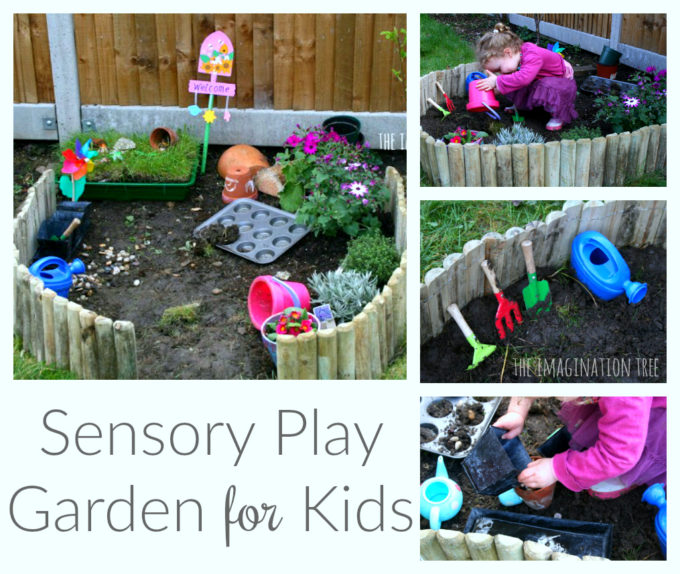How to Create a Sensory Garden for Kids: A Comprehensive Guide

Imagine a garden where every step is an adventure, every touch a discovery, and every scent a memory. A sensory garden is more than just a place to play; it's an interactive wonderland that stimulates the senses and fosters child development. If you're eager to create a sensory garden for children, you're in the right place. This guide will walk you through the process, from garden design to sensory play, ensuring your little ones enjoy the best of outdoor education.
Understanding Sensory Gardens
What is a Sensory Garden?
A sensory garden is a carefully designed space that engages all five senses: sight, sound, smell, touch, and taste. It's an interactive garden that encourages exploration and learning, making it an ideal environment for child development.
Why Create a Sensory Garden for Kids?
Sensory gardens offer numerous benefits for children. They promote sensory play, which is crucial for cognitive development. They also provide a hands-on approach to outdoor education, teaching kids about nature, science, and the environment.
Planning Your Sensory Garden
Choosing the Right Location
The first step in creating a sensory garden is selecting the perfect spot. Ideally, it should be a sunny area with easy access for kids. Consider a space that's visible from your home for added safety.
Designing the Layout
When designing your garden, think about creating distinct zones for different senses. For example, you could have a fragrant herb garden for smell, a water feature for sound, and a textured pathway for touch.

Selecting the Right Plants
Choose plants that offer a variety of textures, colors, and scents. Lavender, mint, and rosemary are great for smell. Sunflowers and daisies add vibrant colors. Soft grasses and ferns provide tactile experiences.
Creating Sensory Zones
Sight: A Visual Feast
Incorporate a mix of colors and shapes to stimulate visual senses. Bright flowers, colorful leaves, and interesting shapes can captivate young minds. Consider planting butterfly-attracting plants like milkweed and coneflowers to add movement and life.
Sound: A Symphony of Nature
Add elements that create soothing sounds. Wind chimes, rustling grasses, and water features can provide a calming auditory experience. Bird feeders can attract birds, adding natural songs to your garden.
Smell: A Fragrant Journey
Plant aromatic herbs and flowers to engage the sense of smell. Lavender, rosemary, and jasmine are excellent choices. You can also include scented shrubs like lilacs and gardenias.
Touch: A Tactile Adventure
Include plants and materials with different textures. Soft moss, prickly pine cones, and smooth stones can all be part of the tactile experience. A barefoot path with various surfaces can be a fun addition.
Taste: A Delicious Discovery
Grow edible plants like strawberries, cherry tomatoes, and herbs. This not only engages the sense of taste but also teaches kids about where their food comes from.
/cottagegarden-56a304163df78cf7727b7cde.jpg)
Enhancing the Sensory Experience
Interactive Elements
Add interactive elements like sandboxes, water tables, and musical instruments. These can keep kids engaged and encourage creative play.
Educational Opportunities
Use your sensory garden as an outdoor classroom. Teach kids about plant life cycles, ecosystems, and the importance of biodiversity.
Safety Considerations
Ensure your garden is safe for children. Avoid toxic plants and sharp objects. Use non-toxic materials and make sure all structures are sturdy and secure.
Conclusion
Creating a sensory garden for kids is a rewarding project that combines garden design with child development. By incorporating elements that stimulate all five senses, you provide a rich environment for sensory play and outdoor education. So, why wait? Start planning your sensory garden today and watch your little ones grow and learn in a world of wonder.
FAQs
What are the benefits of a sensory garden for children? Sensory gardens promote cognitive development, encourage sensory play, and provide hands-on outdoor education. They also help children develop a deeper connection with nature.
What plants are best for a sensory garden? Choose plants that offer a variety of textures, colors, and scents. Lavender, mint, sunflowers, and daisies are great options. Edible plants like strawberries and herbs can also be included.
How can I make my sensory garden interactive? Add elements like sandboxes, water tables, and musical instruments. These interactive features encourage creative play and keep kids engaged.
What safety measures should I consider for a sensory garden? Avoid toxic plants and sharp objects. Use non-toxic materials and ensure all structures are sturdy and secure. Supervision is also key when children are playing in the garden.
How can I use a sensory garden for educational purposes? Use the garden as an outdoor classroom. Teach kids about plant life cycles, ecosystems, and the importance of biodiversity. Encourage them to observe and interact with nature.
0 Response to "How to Create a Sensory Garden for Kids: A Comprehensive Guide"
Post a Comment